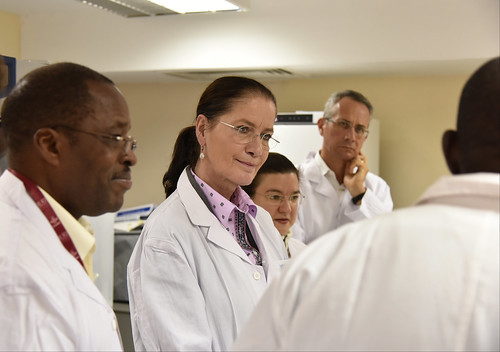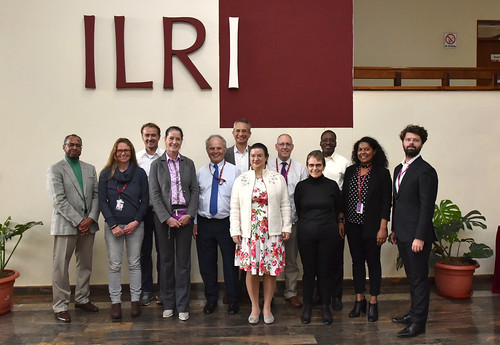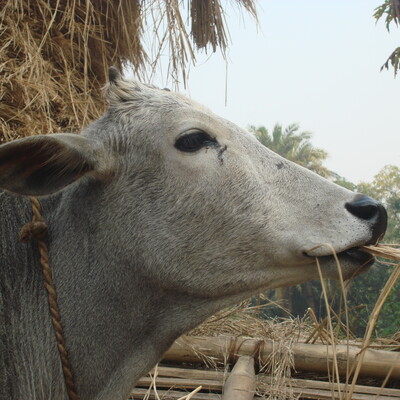
Getting up close and personal: Building on long-standing CGIAR collaboration, a delegation of diplomats tours advanced livestock science facilities in Nairobi
Her Excellency Annett Günther, Ambassador of the Federal Republic of Germany to Kenya (second left); Katrin Hegemann, deputy head of Delegation of the EU to Kenya; and Patrick Egloff, deputy head of mission, Embassy of Switzerland (to Kenya, Burundi, Rwanda, Somalia and Uganda) during a visit to ILRI by Nairobi-based diplomats on 5 December 2019 (photo credit: ILRI/Paul Karaimu).
On Thursday 5 December 2019, a high-level delegation of Nairobi-based diplomats visited the International Livestock Research Institute (ILRI) to learn more about the its work in Kenya and across the world.
Her Excellency Annett Günther, ambassador of the Federal Republic of Germany to Kenya; Katrin Hagemann, deputy head of delegation of the European Union to Kenya; and Patrick Egloff, deputy head of mission at the Embassy of Switzerland (to Kenya, Burundi, Rwanda, Somalia and Uganda) toured ILRI’s Nairobi campus.
During the visit, Jimmy Smith, director general of ILRI, one of 15 CGIAR centres, acknowledged the role the Nairobi-based diplomatic missions play in supporting CGIAR’s mission of improving food and nutritional security for a food-secure world and ILRI’s livestock research for development in particular. Together, Smith said, the European Union, Germany and Switzerland contributed over USD77 million to CGIAR in 2018.
Group photo: Nairobi-based diplomatic missions visited the ILRI campus in Nairobi on 5 December 2019 (photo credit: ILRI/Paul Karaimu).
‘We are working with many institutions and nationals from your countries and we have invited you here to talk about how we can better collaborate to support development efforts in Kenya and the region’, said Smith. He added that the missions are currently supporting or have shown interest in supporting ILRI projects in environmental and health research, natural resource management, nutrition and other research-for-development topics. ILRI works with many partners, and hosts staff and students, from these countries.
The visitors toured ILRI and spoke with scientists as they familiarized themselves with ILRI’s facilities and research activities. They visited ILRI’s Azizi Biorepository, which collects and stores biological materials and related data from livestock and their pathogens and disease vectors; frontier technologies being employed in ILRI’s livestock vaccines and diagnostics laboratories; the CGIAR Antimicrobial Resistance Hub, which applies One Health approaches to reducing the rising risk of disease organisms developing resistance to antibiotic drugs; plots of Africa’s indigenous ‘climate-smart’ Brachiaria grass; ILRI’s secure Biosafety-Level-2 biocontainment animal facilities; and the institute’s environmentally focused Mazingira Centre, which is producing the first-ever assessments of the greenhouse gases generated by African livestock. The dignitaries also visited CGIAR plant growth facilities hosted by ILRI and learnt about ongoing work by the International Institute of Tropical Agriculture (IITA).
ILRI senior staff participating in the visit included Iain Wright, deputy director general for integrated sciences; Dieter Schillinger, deputy director general for biosciences; Shirley Tarawali, assistant director general; Arshnee Moodley, team leader for antimicrobial resistance research; Chris Jones, program leader for feed and forage development; Tom Randolph, director of the CGIAR Research Program on Livestock; and Jacob Mignouna, director of the Biosciences eastern and central Africa (BecA)-ILRI Hub.
See more pictures from the visit.


















